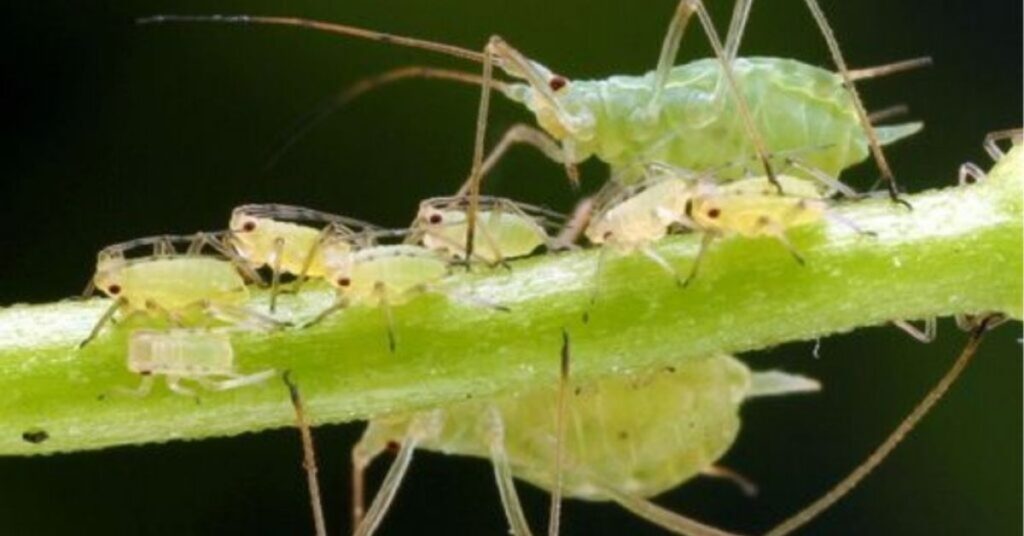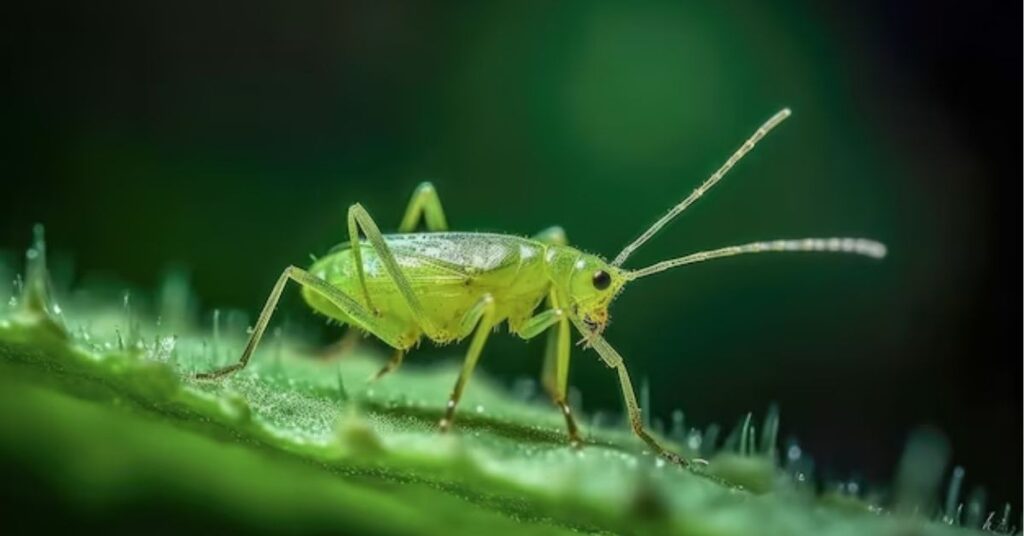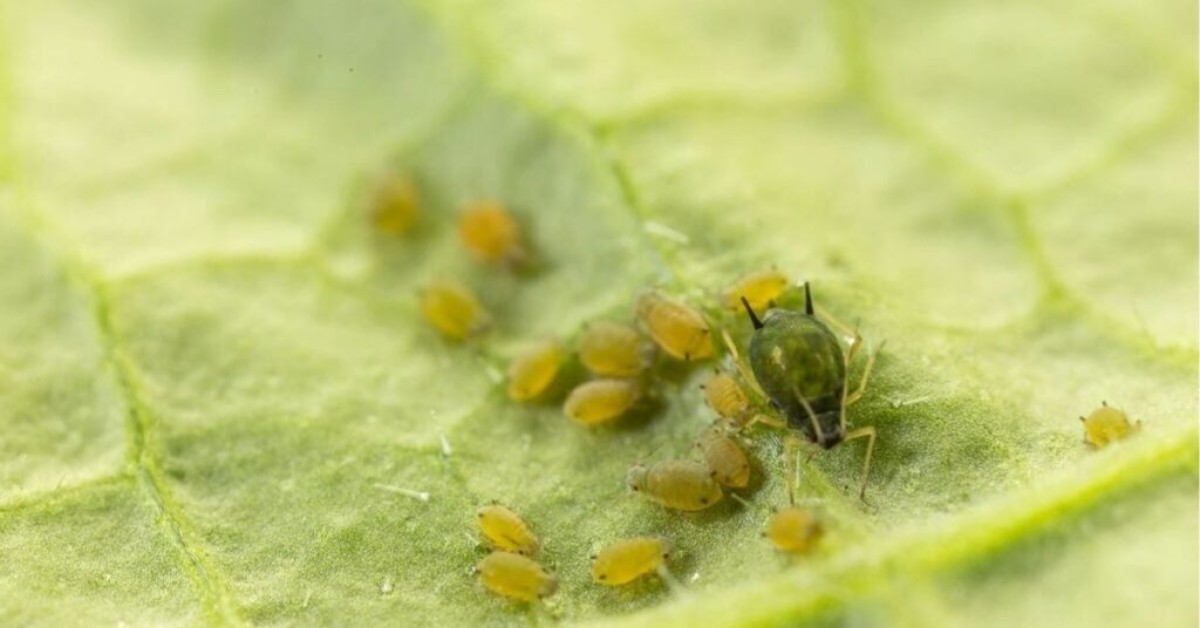Aphid Spiritual Meaning: Symbolisms In Natures And Cultures
Did you know that the tiny aphid, often failed to be noticed and dismissed as just a pest, holds heartfelt spiritual significance in many cultures? These exquisite insects are more than just garden inconveniences; they are seen as messengers from nature, communicating wisdom about growth, transformation, and interconnectedness.
In this article, we will explore the aphid spiritual meaning and how they can inspire us to plough wakefulness and awareness in our daily lives. By the end, you’ll gain a fresh outlook on these small creatures and their role in our ecosystem.
Aphid Spiritual Meaning
Aphids, often seen as mere pests in the garden, hold great spiritual significance that invites us to explore the delicacies of existence. Engaging in contemplation and mindfulness by observing these tiny creatures can deepen our connection with nature’s sounds and rhythms.
As we sit quietly, tuning into the intricate swish of leaves and the gentle hum of life around us, we may discover that the aphid personifies resilience and versatility— qualities essential for personal growth and alteration.

Assimilating rituals and ceremonies that honor aphid symbolism can further increase our spiritual journey. By creating a small altar embellished with images or representations of aphids, we invite their lessons into our lives, reminding us to embrace weaknesses and to appreciate the interconnectedness of all beings.
This act of approbation encourages us to cultivate a sense of gratitude for the seemingly unimportant, revealing how even the smallest creatures can teach us about melody within the ecosystem. By embracing the lessons of the aphid, we embark on a path of self-discovery, learning that every experience — no matter how small — holds the potential for profound insights and transformation.
Understanding Aphids: Secret Life Of This Nature Minion
Aphids, often dismissed as meagre garden pests, possess a compound social structure that rivals that of many larger animals. These tiny insects form colonies where cooperation and communication flourishes, utilizing odors to signal alarm and coordinate their movements.
Some species show an engrossing form of parthenogenesis, allowing females to reproduce without males, ensuring rapid population growth under favorable conditions. This reproductive strategy not only accelerates their presence in gardens but also contributes to their adaptability against environmental stresses.
Beyond their infamous reputation for sucking sap and transferring plant viruses, aphids play a pivotal role in the ecosystem as a food source for various predators, including ladybugs and lacewings. Their interactions with ants further underscore their unique position in the food web; ants often protect aphid colonies from predators in exchange for the sweet honeydew they produce.
This mutualistic relationship highlights the interconnectedness of nature and invites us to appreciate even the smallest creatures for their donations to ecological balance. By understanding aphids’ secret lives, we can shift our perspective from viewing them solely as annoyances to recognizing their essential role in the intricate fabric of life.
Aphid Symbolism In Nature
In the complex tapestry of nature, every element serves as a messenger from the natural world, carrying profound messages that echo deeply with our human experience. The vibrant colors of spring flowers, for instance, symbolize abundance and fertility, inviting us to mirror on renewal and growth.
Each flower is not just a visual delight but a reminder of the cycles of life, goading us to embrace change and recognize the potential for new beginnings in our own lives. Consider the humble acorn, an ancestor of capability, which embodies the promise of mighty oaks.
This small seed carries within it the plan for greatness, decorating that even the most self effacing beginnings can lead to remarkable outcomes. In observing these symbols, we are encouraged to look beyond the surface and explore the connection of life. Nature’s messages force us to cultivate gratitude for what we have while inspiring us to bring up our own seeds of ambition and creativity, encouraging a deeper appreciation for the affluence that surrounds us.
Aphid Symbolism In Cultures
Aphids, often dismissed as trivial pests, carry profound symbolism across diverse cultures, reflecting humanity’s convoluted relationship with nature. In Ancient Civilizations, these tiny insects were seen as a representation of renewal and abundance.
In certain agricultural societies, aphids were believed to personify the recurrent nature of life, echoing the wisdom of planting and harvesting. Their rapid reproduction mirrored the restorative qualities of crops, reminding communities of the interconnectedness of all living things and the importance of nurturing the earth.

Native Spiritual Practices emphasize euphony with nature, viewing aphids not just as nuisances but as essential components of the ecosystem. Some tribes interpret their presence as a sign of balance; when aphids boom, it indicates a flourishing environment.
This perspective promotes respect for even the smallest beings, calling attention to the vital role they play in sustaining biodiversity. Cross-Cultural Interpretations further unite these threads, revealing that different societies often regard aphids as symbols of adaptation and resilience. As we explore these multifaceted meanings, it becomes evident that the aphid’s story goes beyond its tiny microscopic size, offering rich insights into our shared human experience and our responsibility towards the natural world.
Aphid Wisdom In Daily Life And Its Practical Application
In the world of gardening and agriculture, understanding aphids can change our approach to cultivating abundance. These tiny insects, often seen as pests, embody a resilience that mirrors the cyclical nature of life. By observing how aphids adapt to their environments, gardeners can obtain insights into fostering robust ecosystems.
Amalgamating companion planting not only puts off aphids but also promotes a diverse garden where advantageous insects thrive. This symbiotic relationship enhances crop yields, decorating how embracing adaptability in our practices can lead to greater harvests.
Beyond the garden, aphid wisdom can inspire art and creative expressions. The tangled patterns formed by these insects on leaves can serve as an inspiration for artists, encouraging them to explore themes of transformation and interconnectedness.
By funneling the dainty balance of nature into their work, creators can summon deeper emotional responses, reminding us of the beauty found in imperfection and change. Just as aphids journey their environment with agility, we too can approach our decision-making and life choices with an open mind, embracing adjustability as a guiding principle in our personal and professional endeavors. This all inclusive perspective invites us to cultivate not just abundance in our gardens but also richness in our lives.
Difference Between Aphid Spiritual Meaning And Bird On Your Shoulder Spiritual Meaning
Aphids, often seen as mere pests in the garden, hold great spiritual significance that invites us to explore the delicacies of existence. Engaging in contemplation and mindfulness by observing these tiny creatures can deepen our connection with nature’s sounds and rhythms.
The image of a bird alighted on your shoulder goes beyond the ordinary, personifying intense spiritual symbolism. This bosoming connection invites us to embrace the guidance and wisdom that nature offers.
Conclusion
Exploring the spiritual significance of aphids reveals a wealth of insights into growth, transformation, and interdependence. These little creatures serve as powerful reminders that even the smallest beings can have a profound impact on their environment and those around them. Their ability to adapt and flourish encourages us to embrace change and seek harmony in our lives.
As we move forward, let us honor the lessons learned from these tiny messengers and integrate their wisdom into our daily existence. Take time today to connect with nature and observe how these delicate beings can enrich your understanding of spirituality.
FAQs
What Do Aphids Indicate?
Their presence typically signifies that plants may be stressed due to factors such as nutrient deficiencies, water imbalance, or overcrowding.







